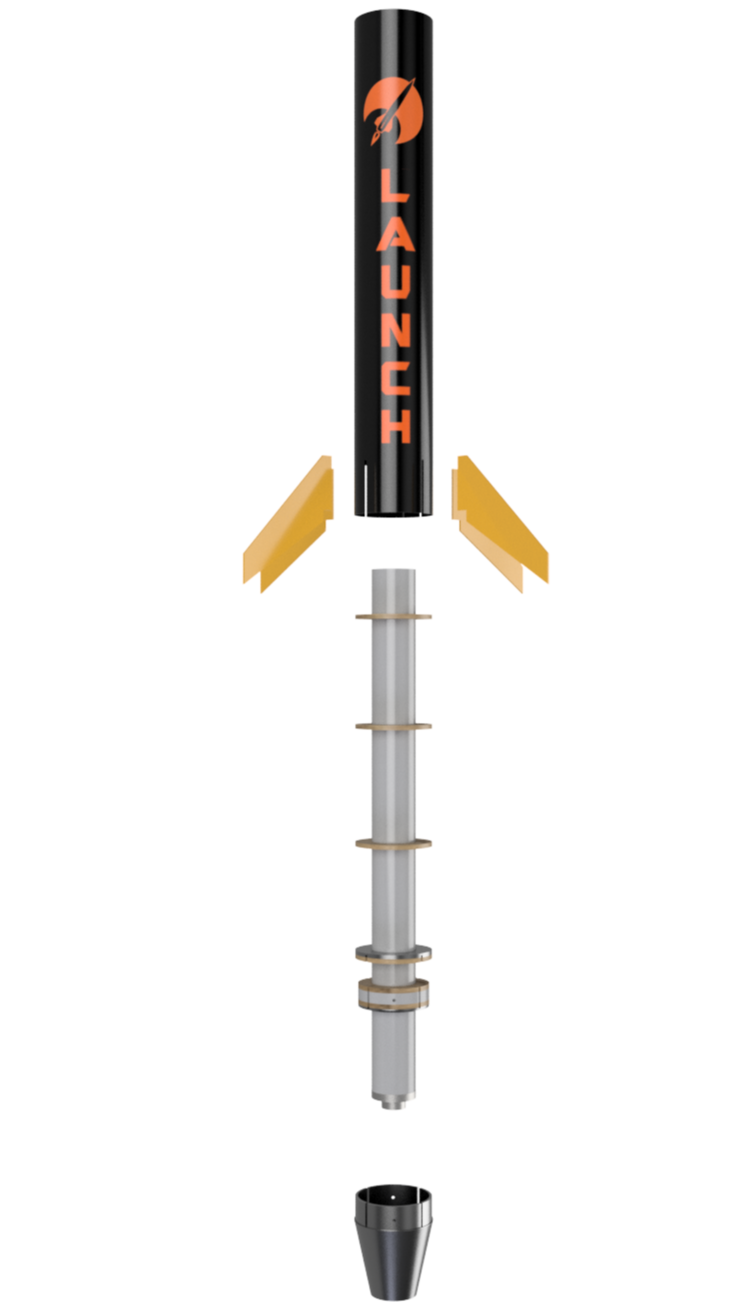BoosterThe booster is the powerhouse of Ligthwave. It contains the ammonia-perchlorate L265 "Mellow Yellow" solid rocket motor that propels the rocket to 12,000 feet above ground during its 11 second burn.
The aerodynamic surfaces on the booster are optimized for maximum altitude. The swept-back wings are not traditionally used on rockets due to their fragile nature, but provide significantly better performance compared to a traditional wing. To make up for this lack of strength, the winds were machined from plates of 1/8" thick FR4 fiberglass.
Below the fins is the boat tail, which is the tapered end of the rocket. Boat tails, like swept-back wings, are rarely seen on rockets, due to the complexity they add. However, they provide a significant aerodynamic advantage by reducing turbulence at the base of the rocket, which is normally a 90 degree angle. Lightwave originally had an aluminum boat tail, but it was switched out for a 3D printed plastic one to save weight.
|
AvionicsThe avionics bay holds the experimental camera systems along with the GPS transmitter and deployment electronics that operate the rocket.
A pair of redundant Eggtimer Quantums control drogue parachute deployment once apogee is detected. To ensure flight success in the face of a potential failure, they also operate on two independent power and arming systems.
The camera system is comprised of a Raspberry Pi Zero, Pi Cam, 5.8GHz transmitter, and 5.8GHz antenna. This system will attempt to stream back video from onboard the rocket in real time. The eventual goal of this system is to send video footage from the rocket down to the ground station, and then livestream this footage over Youtube for anyone to watch.
The rocket's position can be tracked using the Eggfinder transmitter onboard. The transmitter will send the GPS position of the rocket every 5 seconds over 900MHz radio. This data can then be received by recovery crews on the ground using the small ground tracking station.
|
Sustainer and NoseconeThe sustainer, immediately above the avionics bay, holds the parachutes for recovering the rocket.
Once the rocket reached apogee, the Eggtimer Quantum avionics will fire a deployment charge and eject the drogue and main parachutes from the bay, and the drogue parachute will immediately open. The main parachute is held closed using a Jolly Logic chute release, a system that is rarely used for rockets this size. The Jolly Logic will release the parachute when it determines it is at the correct altitude.
The Jolly Logic chute release holds the main parachute in a bundle with an elastic cord. A small box hangs on the end of the elastic cord that contains an altimeter, actuator, and small battery. When the altimeter determines it is at the correct altitude, it will open the actuator and release the elastic cord. This will allow the parachute to open and unfold, and the Jolly Logic is kept safe, connected to the shock cord by a secondary elastic cord.
The nosecone is the separation point of the rocket; where the parachutes will come out of. The nosecone is retained to the rocket with an eye-bolt and shock cord. Since the rocket is going just under the mach transition level, the all-fiberglass nosecone is acceptable. At any higher speeds, the tip would experience a significant amount of heating and need to be replaced with a metal one.
|




